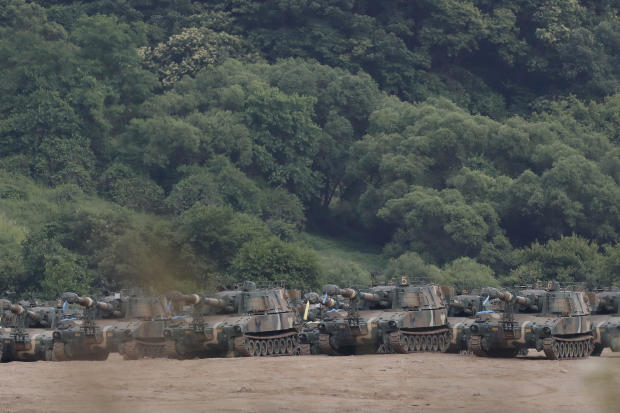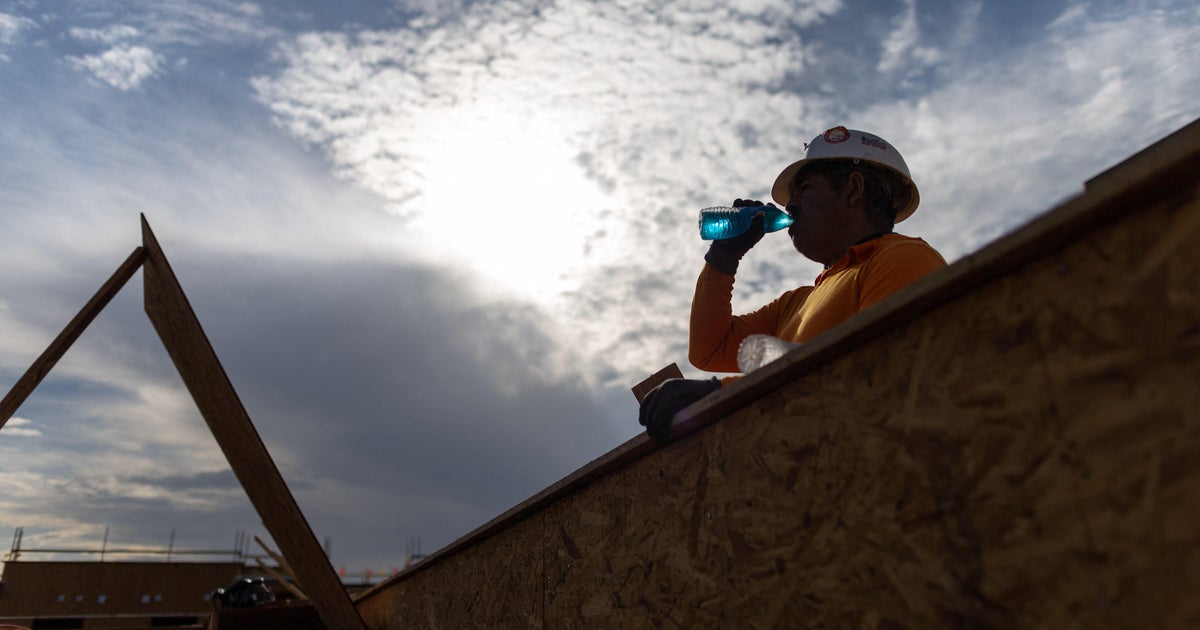North Korea blows up liaison office shared with South, threatens to send troops to border
Seoul, South Korea — North Korea blew up an inter-Korean liaison office building just north of the heavily armed border with South Korea on Tuesday. It was a dramatic display of anger that sharply raises tensions on the Korean Peninsula and puts pressure on Washington and Seoul amid deadlocked nuclear diplomacy. It also came after North Korea issued a new threat to send North Korean troops into demilitarized border areas.
The demolition of the building, which was located on North Korean territory and had no South Koreans working there, is largely symbolic. But it's likely the most provocative thing North Korea has done since it entered nuclear diplomacy in 2018 after a U.S.-North Korean standoff stoked fears of war. It will pose a serious setback to the efforts of liberal South Korean President Moon Jae-in to restore inter-Korean engagement.
North Korea's official Korean Central News Agency said the nation destroyed the office in a "terrific explosion" because its "enraged people" were determined to "force (the) human scum and those, who have sheltered the scum, to pay dearly for their crimes," apparently referring to North Korean defectors who for years have floated anti-Pyongyang leaflets across the border.
Photos from the South's Yonhap News Agency showed smoke rising from what appeared to be a complex of buildings. The agency said the area was part of a now-shuttered inter-Korean industrial park where the liaison office was located.
The North also said it has cut off all government and military communication channels with the South while threatening to abandon bilateral peace agreements reached during North Korean leader Kim Jong Un's three summits with Moon in 2018.
New border threat
Earlier Tuesday, North Korea's military threatened to move back into zones that were demilitarized under inter-Korean peace agreements. The General Staff of the Korean People's Army said it was reviewing a ruling party recommendation to advance into unspecified border areas that had been demilitarized under agreements with the South, which would "turn the front line into a fortress."
It wasn't immediately clear whether the destruction of the liaison office could have been the action, or at least part of the action, decided on by North Korea's military to make good on the threat to move into demilitarized areas.
"Our army is keeping a close watch on the current situation in which the (North-South) relations are turning worse and worse, and getting itself fully ready for providing a sure military guarantee to any external measures to be taken by the party and government," said the KPA's General Staff, which is akin to other countries' Joint Chiefs of Staff.
It said it was studying an "action plan for taking measures to make the army advance again into the zones that had been demilitarized under the (North-South) agreement, turn the front line into a fortress and further heighten the military vigilance against (the South)," according to the statement carried by the North's official Korean Central News Agency.
The South Korean Ministry of National Defense issued a statement Tuesday saying the country's military was maintaining "a firm readiness posture by closely monitoring the North Korean military's movements around the clock, and is making every effort to prevent the military crisis from escalating due to stable management of the situation."
"If North Korea carries out military provocation, the South Korean military will respond strongly," the defense ministry added.
History of antagonism
North Korea has a history of taking highly visual symbolic steps. It invited foreign journalists to watch the detonation of its underground nuclear testing tunnels in 2018 and the demolition of a cooling tower at its main nuclear complex in 2008.
Both events were an attempt by the North to show it was serious about denuclearization amid rampant outside skepticism about its commitment.
"It's hard to see how such behavior will help the Kim regime get what it wants from the world, but clearly such images will be used for domestic propaganda," said Leif-Eric Easley, a professor at Ewha University in Seoul.
Inter-Korean relations have been strained since the breakdown of a second summit between Kim and Mr. Trump in Vietnam in early 2019. That summit fell apart because of disputes over how much sanctions should be lifted in return for Kim's dismantling his main nuclear complex.
In 2018, the rival Koreas opened their first liaison office at Kaesong to facilitate better communication and exchanges since they were divided into a U.S.-backed South Korea and a Soviet-supported North Korea at the end of the World War II in 1945. When the office opened, relations between the Koreas flourished after North Korea entered talks with South Korea and the United States on its nuclear weapons program.
Kim later vowed to expand his nuclear arsenal, introduce a new strategic weapon and overcome the U.S.-led sanctions that he said "stifles" his country's economy.






